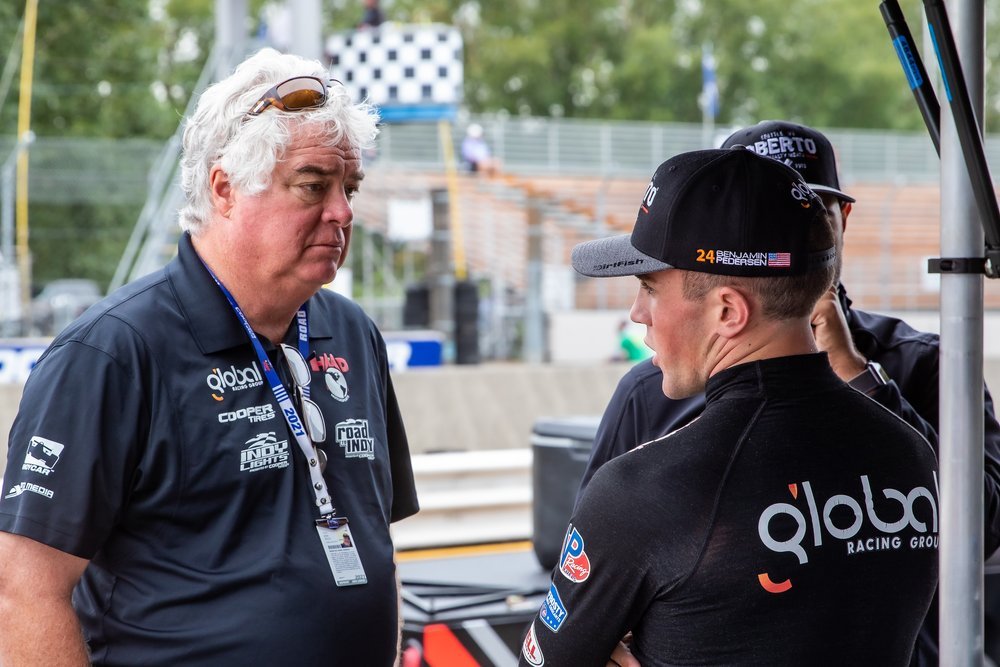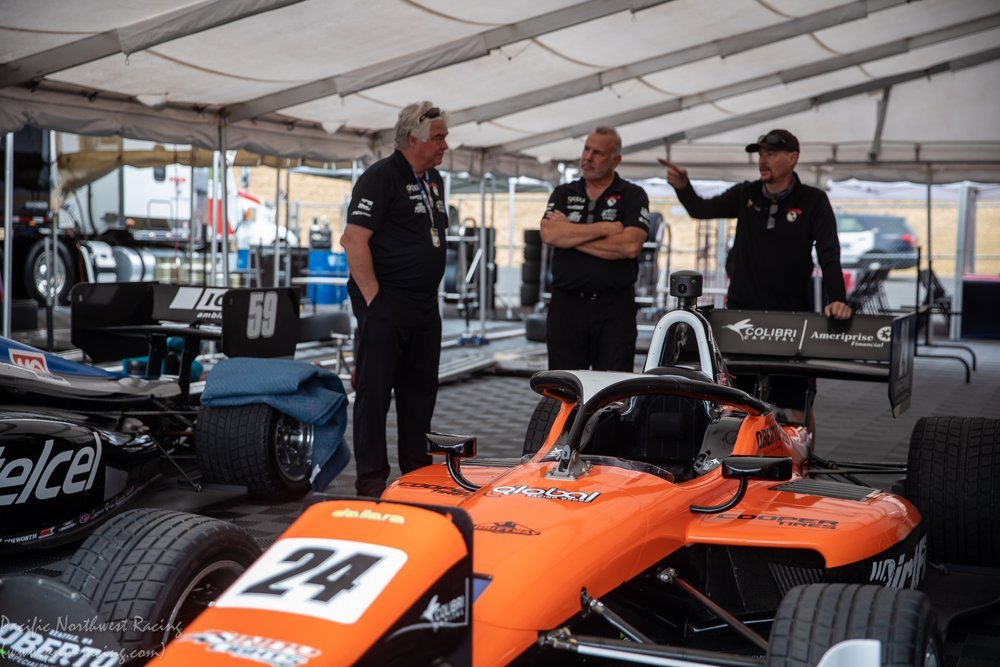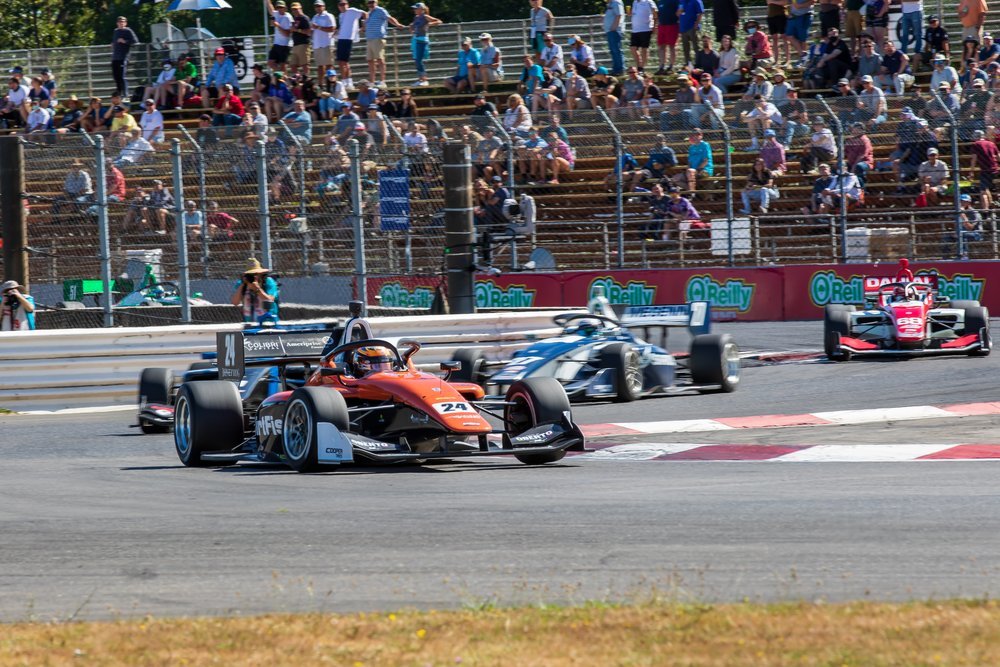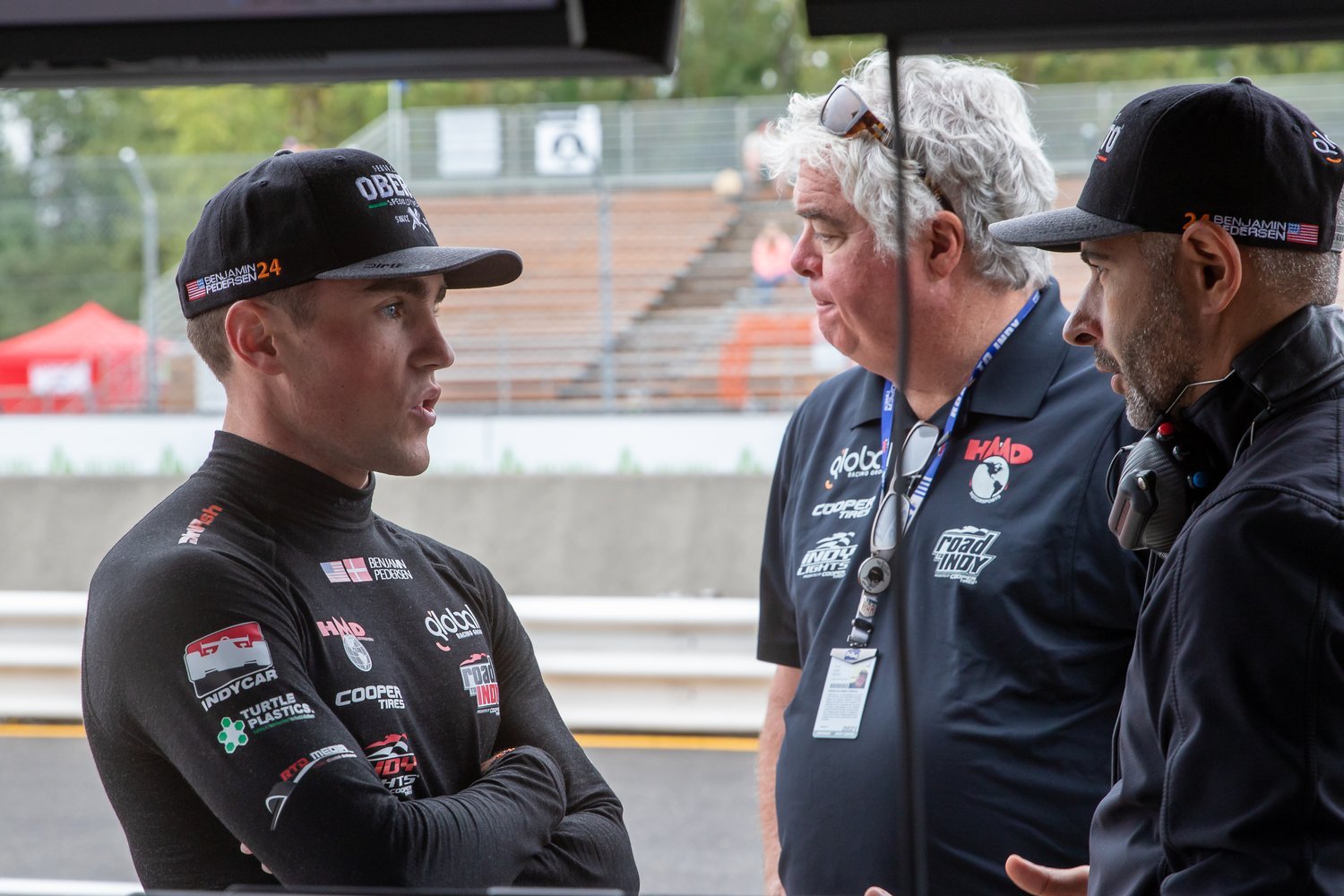The Rise of Benjamin Pedersen
MARGINAL GAINS MATTER
MANY TINY THINGS MAKE A BIG DIFFERENCE: THE RISE OF BENJAMIN PEDERSEN
STORY | Karl Noakes
PHOTOGRAPHY | Keith Scott
It was during his very first karting experience that Benjamin (and others on hand) quickly realized he had a remarkable ‘feel’ for driving quickly especially given his relatively young age. The ability to maximize performance through an innate sense of what the kart was telling him through his hands, feet, and buttocks set Benjamin Pedersen apart.
Exposed to the inner workings of the world of Formula 1 whilst growing up – through his father’s corporate partnership with Lotus F1 Team during 2012 – he was hooked on motorsport at the highest levels. A fire was lit!
The goal, to be a top-level NTT INDYCAR SERIES driver and IMSA WeatherTech SportsCar Championship DPi Driver for a top-level team. Here’s the story of what has happened since those initial days, and more importantly how it all came to be.
His feel for the car, burning desire, and ingrained commitment to self-improvement projected Benjamin to multiple podium finishes in Indy Lights during the 2021 season, setting him on the way to realize his dream.
We initially connect on this article when the NTT IndyCar Series arrived in the PNW for the Grand Prix of Portland, in September 2020, for rounds 15/16 of 20. Benjamin was competing in the Indy Lights Series behind the wheel of the #24 Global Racing Group w/ HMD Motorsports car. Pedersen ultimately secured a podium finish, then went on to complete three consecutive podiums (six for the season) at Laguna Seca and Mid-Ohio to finish the season strong, taking fourth in the Drivers Championship despite it being his rookie year.
Taking Benjamin back to his beginnings when he was a regular at PGP Motorsports Park, the local go-kart track in Kent, WA, it was this innate sense of ‘feel’ that allowed him to explore limits of his own ability, the track and kart with confidence. With the fire burning, the very astute decision to bring onboard a performance coach was the catalyst, a partnership with Peter Argetsinger ensued that would last for years.
It’s Benjamin’s desire to grow, willingness to learn, and eagerness to make continual improvements that, when combined and refined, has led to increased performance and impressive race results.
First time out in a race car led to a podium at Mid-Ohio. At around that time, 2015, the FIA-backed Formula 4 series was being introduced in the U.S., offering a gateway to professional motorsport previously not available to aspiring young talent. A perfect storm!
Jumping at the opportunity, Benjamin secured the support and sponsorship needed to enter the series. Ultimately going on to finish 10th in the F4 U.S. Championship Powered by Honda, earning nine top-10s in 15 races. And, the following year going on to finish fifth again with Honda, earning two victories, four podiums, two pole positions, two fastest laps, and 11 top-fives in 17 races. A breakthrough year.
Like many aspiring drivers, including the late Ayrton Senna, Benjamin headed to the UK to compete in the BRDC British Formula 3 Championship in 2019. Considered by many to be an essential step in career development in the sport, Benjamin subsequently secured a win and two podiums in F3. In 2020 Benjamin tallied ninth overall in the F3 Championship, with 15 top-10s and three podiums including a victory at The Home Of Motorsport – Silverstone.
Peter Argetsinger was at Benjamin’s side, literally, helping him prepare mentally, physically, and professionally, keeping him free of distractions. Benjamin was a willing student, considering all feedback— no matter how critical—to be a gift.
Curious, I wanted to understand more about Benjamin’s deep commitment to making the smallest of gains to deliver cumulative performance improvements as he completes his first season in Indy Lights in 2021. This is a world where 1/100ths of a second matters, and where experts come together to explore how to extract every one of those fractions. After all, Indy Lights cars are built to set specification, with similar tech, this is why marginal gains really do matter. So, what does race week look like, what happens in the pursuit of excellence?
It takes a team, a group of experts operating within a circle of trust, comprising the driver obviously, driver performance coach Jonatan Jorge (aka JJ), and Lead Engineer Mark Weida. Tuesday prior to race weekend is when it really becomes about digging into the details. Benjamin explains how they review weather forecast, car set-up for track variances from the previous race, and deep dive into data. A 90-minute call is typical.
It’s all about the data, the science that compliments the art (the feel): telemetry from past races; gear maps; brake pressure maps; throttle maps. The team compares driver performance and car performance to optimize for the upcoming circuit. And then all of this is absorbed and used to prepare for the next sessions. Often, such as at Laguna Seca, there’s only one practice session so precision and details matter and it need to be right the first time.
Even more intrigued, I asked Benjamin for examples of how he, his coach, and engineer function as one. First off, there’s driver prep session to ensure he conserves energy, hydrates, and sleeps well. Prior to initial practice, maybe three or four hours before the track goes hot, it’s all about getting into the zone with video sessions, etc.
Off the track, the team gathers their feedback. Benjamin offers what he feels from practice sessions. The coach translates this into needed modifications in driver performance, and the race engineer focuses on car performance and set-up.
Coach will offer suggestions ‘change braking pressure on entry’ or ‘scrub wide to set-up for next brake zone’ or ‘turn in more slowly and power on earlier’ ‘Heading into T2 need higher brake pressure to reduce rear oversteer.’
Another factor is the tire temps and gapping to car in front during warm-up, the right temps making a significant difference on initial laps. Get this wrong, and time is lost immediately, places on grid may be lost. Attention to gaining advantage on the warm-up typifies the focus. The engineer might respond with lower flats/rebound adjustments, and other configuration adjustments to aero, etc.
With the first race of the weekend over, on the podium Benjamin is proof every tiny one percent improvement made a difference. Benjamin receives encouragement and congratulations from Romain Grosjean, an ex-F1 and now Indy driver for Andretti Autosport for 2022, who has become a friend and source of huge inspiration. Benjamin would go on to finish the second race in fifth place.
A strong finish to the season bodes well for the 2022 season. I look forward to watching Benjamin, our local Indy Lights driver, progress his motorsports career. Some of you may have been fortunate to have Benjamin alongside you at ProFormance Racing School, headquartered at Pacific Raceways in Kent, WA. Benjamin is now settled into the next stage of his career with a move to Indy – consistent with his ethos, to be closer to the action, more deeply engaged with the team, and always developing with support of those around him.
Hope you get a little sense of the passion, preparation, and planning that leads to ultimate performance. Every one percent, every yard, every 1/100th of a second all make a big difference in success on the track. Good luck Benjamin for 2022. The Avants Community will be avid followers.












